The Pakistan flag, a striking emblem of independence and identity, is a profound symbol for over 220 million people. Comprising a dark green field with a white crescent moon and star at the center, flanked by a vertical white stripe, the national flag is not just a piece of cloth but a beacon of the nation’s ideology and aspirations. The significance of the Pakistan flag extends beyond its physical attributes, representing the country’s rich cultural heritage, religious values, and political history. As such, understanding the history, meaning, and symbolism embedded in its design offers invaluable insights into the heart and soul of Pakistan.
This article delves into the origins of the Pakistan flag, tracing back to its adoption shortly before the country gained independence in 1947. It explores the comprehensive meaning behind the vibrant green color and the significance of the white star and crescent that adorn the flag, elements that are deeply entrenched in the nation’s identity. Additionally, the symbolism of the crescent and star, as central to the flag’s design, is dissected to reveal their importance in representing progress and light. The impact and pervasive influence of the flag on national and international levels are also examined, highlighting its role in uniting the Pakistani people under a single banner. Through this exploration, the article aims to provide a holistic understanding of the Pakistan flag, celebrating the principles and values it stands for.
History of the Pakistan Flag
The Creation of Pakistan
The concept of Pakistan as a separate nation for Muslims was vividly captured in early flag designs, which were symbolic representations of the nation’s aspirations. In 1942, the Pakistan National Movement published a pamphlet titled “The Millat of Islam and the Menace of ‘Indianism'” by Choudhry Rahmat Ali, a key figure in the Pakistan Movement. This pamphlet featured a proposed flag for Pakistan, which included a thin white crescent and five white stars on a green field, each star representing a constituent nation of the proposed state: Punjab, Afghania (NWF), Kashmir, Sindh, and Balochistan.
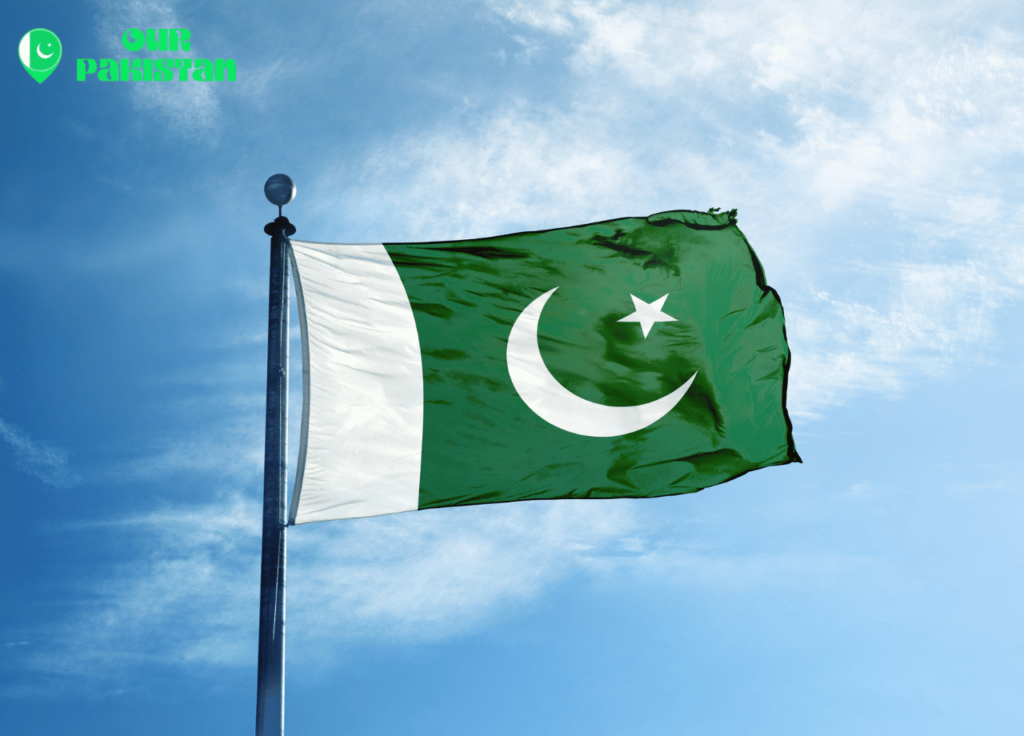
Initial Flag Designs
The evolution of Pakistan’s flag design was influenced by various proposals and symbolic elements reflecting the country’s Islamic identity and political history. A notable iteration in 1946 featured the stars in a pentagonal arrangement, emphasizing the unity of the five regions. Additionally, Rahmat Ali also designed a flag for a proposed ‘Pak Commonwealth of Nations’, which included a smaller crescent and ten stars, representing an association of independent Muslim states across South Asia. The Muslim League, a pivotal player in the independence movement, adopted a simple yet profound flag design in 1937, consisting of a solid green field charged with a white crescent and star.
Official Adoption
The design process culminated in the creation of a flag that not only symbolized the nation’s foundation but also its future aspirations. By 1944, Muhammad Ali Jinnah, the leader of the Muslim League and a key architect of the new nation, was advocating for the League’s flag to be recognized as the flag of Pakistan. In 1947, a significant proposal by the Viceroy of India featured a combination of the Muslim League’s flag with the Union Jack, which was promptly rejected by Jinnah, emphasizing the need for a distinct identity free from colonial symbols. Finally, the flag design was refined by a team led by Syed Amir-uddin Kedwaii, and officially adopted by the Constituent Assembly of Pakistan on August 11, 1947, just days before the country’s declaration of independence. This flag, integrating the green color representing Islam and the majority of Muslims in Pakistan, with a white stripe for religious minorities, and the central crescent and star symbolizing progress and light, became a profound emblem of national unity and Islamic identity.
Meaning of the Pakistan Flag
Colors and Their Significance
The Pakistan flag features a dominant dark green field with a vertical white stripe at the hoist side. This color scheme is deeply symbolic and reflective of the nation’s identity and religious demographics. The dark green color, officially recognized as ‘Pakistan green’, represents the Muslim majority of the country. Historically, green has been associated with Islam, symbolizing peace and the Islamic faith. The specific shade of green used in the flag is so unique that it has been named after the nation itself, adding a layer of national pride and identity to the flag’s design.
The white stripe, on the other hand, represents Pakistan’s religious minorities, which include Hindus, Christians, Sikhs, and Zoroastrians among others. This inclusion underscores the foundational principles of the nation to support religious diversity and harmony. The white color is also said to represent all the colors in the spectrum, symbolizing a comprehensive inclusivity of all minority groups within the country.
Symbolism in Design
Central to the design of the Pakistan flag is the white crescent moon and five-rayed star situated in the middle of the green field. The crescent moon is a universal symbol of progress, and in the context of the Pakistan flag, it emphasizes the forward-looking aspirations of the nation. The five-pointed star complements this by symbolizing light and knowledge, which are core values that guide the nation’s path forward.
The combined imagery of the star and crescent is not only a prevalent emblem of Islam but also serves as a potent symbol of Islamic heritage and identity. This symbolism is frequently found on flags of other Muslim-majority countries, reflecting a common cultural and religious heritage.
Moreover, the arrangement of the star and crescent within the green field, along with the white stripe, is a thoughtful representation of the country’s commitment to both its Islamic identity and the rights of its religious minorities. This design element reinforces the idea of unity and coexistence among the diverse religious communities within Pakistan, aligning with the nation’s foundational aspirations for peace and prosperity.
Symbolism of the Crescent and Star
Historical Importance
The crescent and star symbol, prominently featured on the Pakistan flag, has a rich history that predates its association with Islam. Initially, the crescent was a symbol used in ancient Greece, linked to moon goddesses such as Artemis. It was later adopted by the Byzantine Empire, where it was combined with an eight-pointed star representing the Virgin Mary when Constantinople became a Christian city in 330 CE. The Ottoman Turks, who conquered Constantinople in 1453, adopted the crescent and star in 1844, likely inspired by the Byzantine symbols. As the Ottoman Empire rose to prominence, becoming a significant Muslim power, these symbols began to represent Islam itself, especially after the empire’s fall in 1922.
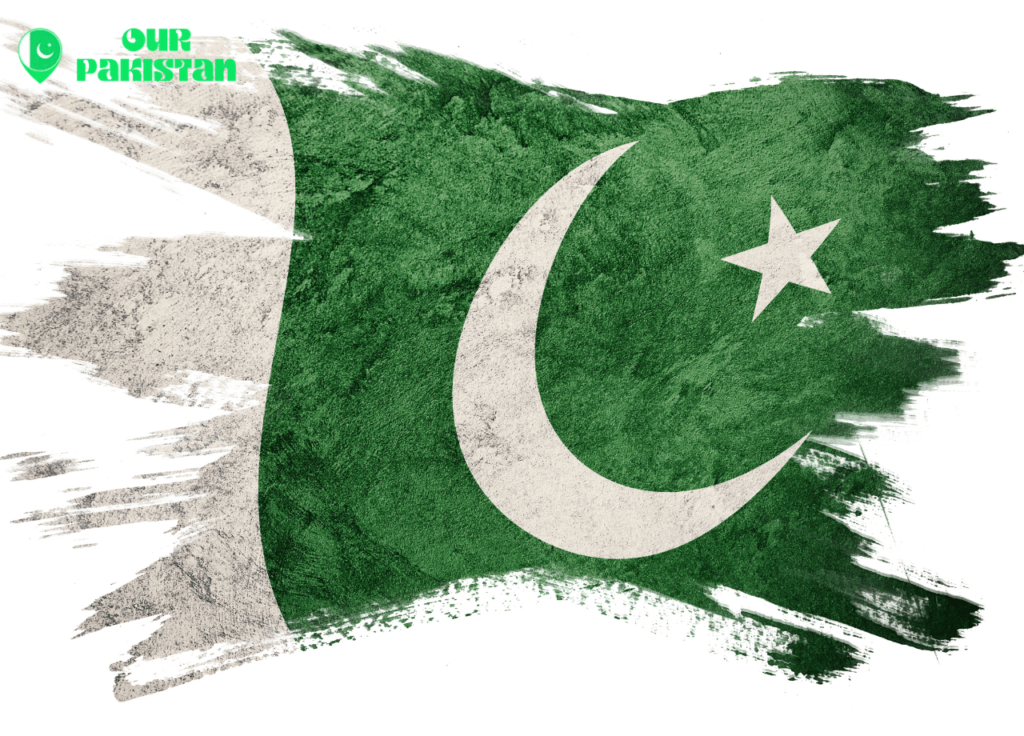
Cultural and Religious Significance
In contemporary times, the crescent and star are universally recognized as symbols of Islam, appearing on the flags of several Muslim-majority countries. The crescent typically faces to the right, symbolizing the waxing phase of the moon, which represents the growth and establishment phase of the Ottoman Empire. This phase signifies the beginning and expansion, mirroring the empire’s rise under Osman I and reaching its zenith under Sultan Mehmet II, known as al-Fatih (the Conqueror). Conversely, the crescent facing left symbolizes the waning crescent phase, reflecting the decline of the Ottoman Empire during the reign of Sultan Abdul Hamid II, despite his efforts to introduce reforms.
These symbols are deeply embedded in the cultural and religious fabric of the Islamic world, transcending their historical origins to embody the spiritual aspirations and communal identity of Muslims globally. The adoption of these symbols on the Pakistan flag underscores the nation’s Islamic identity while promoting a sense of unity and continuity with the broader Muslim heritage.
Impact and Influence of the Flag
The Pakistan flag, with its distinctive green field and white crescent moon and star, serves as a powerful emblem of national identity and unity. Its influence extends beyond mere representation, playing a pivotal role in various facets of Pakistani society.
Patriotic Symbolism
The flag’s design and colors are imbued with deep patriotic symbolism. The green color represents Islam and the majority of Muslims in Pakistan, while the white stripe is a testament to the nation’s commitment to religious minorities. This symbolism is reinforced during national celebrations and commemorations, where the flag is prominently displayed and respected. The flag must be flown at the same height as other national flags and higher than provincial or corporate flags, signifying its supreme status in the country. Furthermore, the flag is a mandatory presence in all government buildings and is ceremoniously raised every morning and lowered before sunset, underscoring its role as a symbol of national pride and sovereignty.
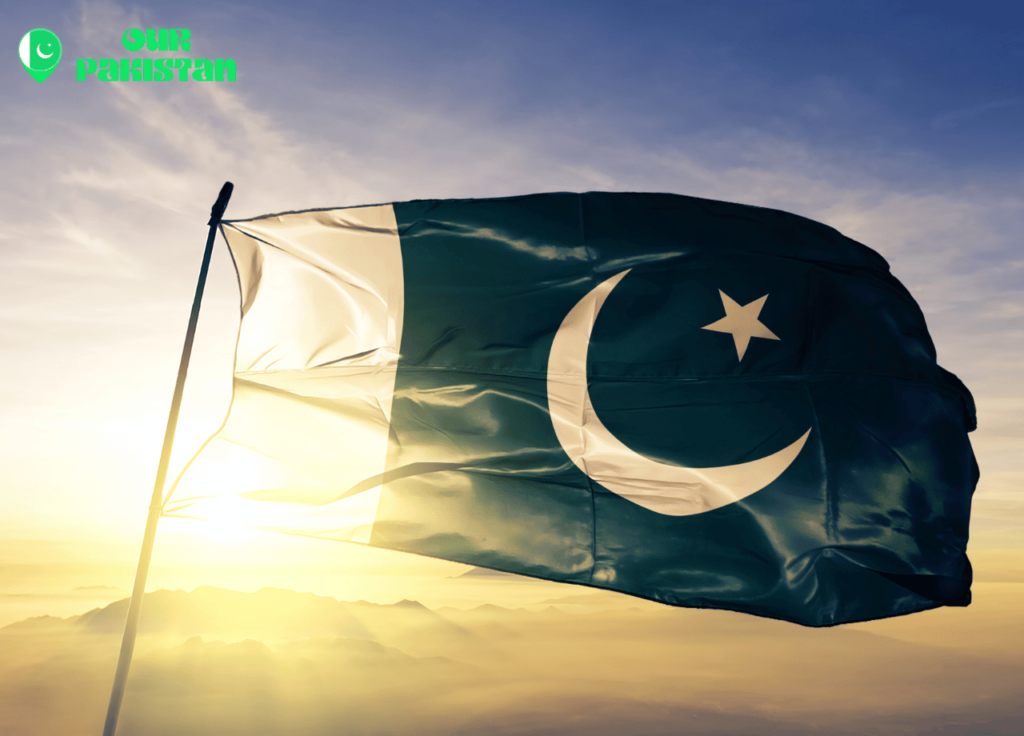
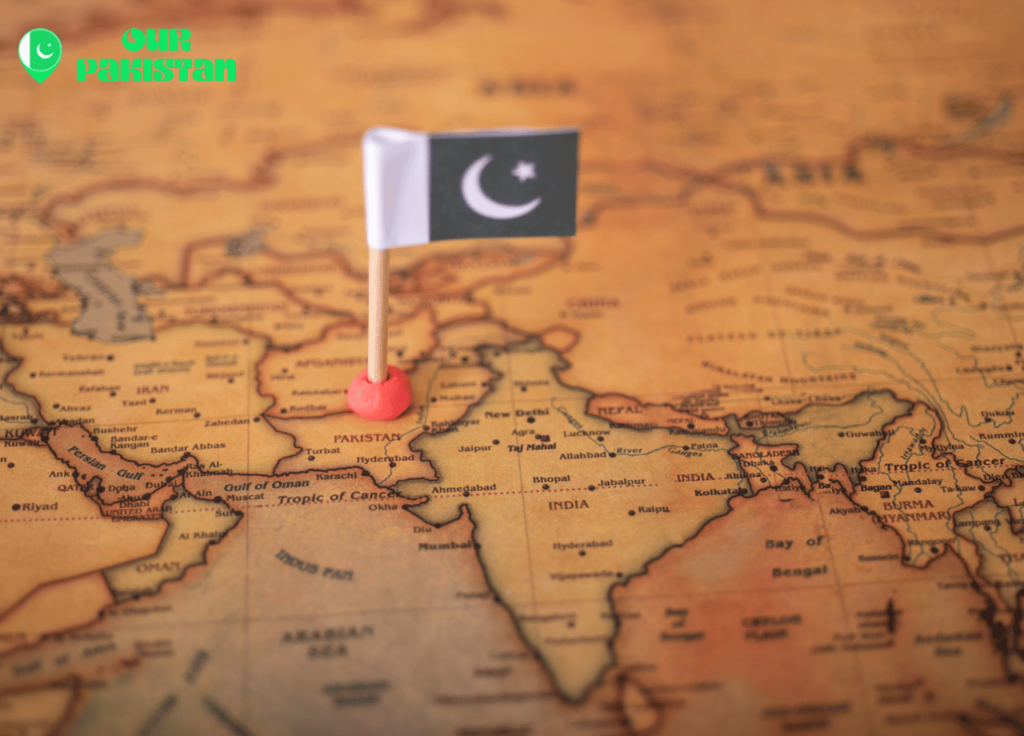
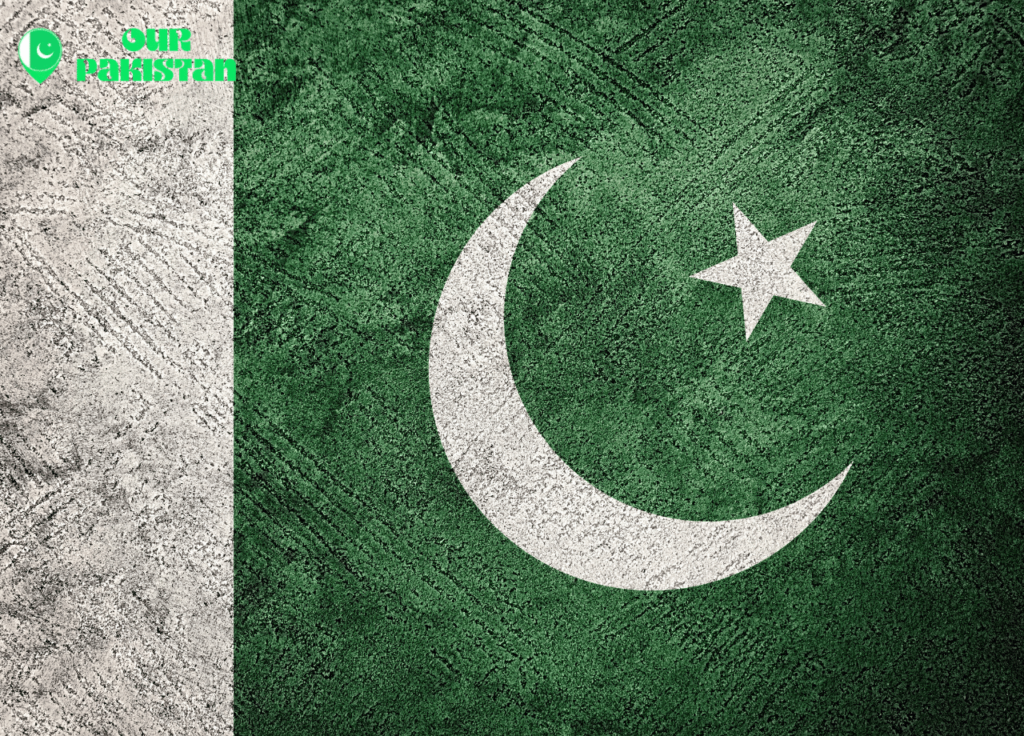

Representation in Media and Events
The representation of the Pakistan flag in media and public events further amplifies its impact and influence. It is a central element in the national anthem, where it is referred to as “Parcham-e-Sitāra-o-Hilāl,” which translates to “Flag of the Crescent and Star” . This depiction plays a crucial role in fostering a sense of national identity among Pakistanis. Additionally, the flag is a staple at significant events, such as Republic Day, Independence Day, and Defence Day, symbolizing unity and national pride.
The flag’s portrayal extends to daily rituals and special ceremonies. For instance, a highly elaborate flag-raising and lowering ceremony is performed at the Wagah–Attari border, drawing hundreds of spectators, a testament to its cultural and patriotic significance. These events not only celebrate the flag itself but also the values it stands for—progress, light, and inclusivity.
The reverence for the Pakistan flag is evident in the strict rules governing its display. It must never be displayed upside down, vertically, or with the crescent and star facing left, ensuring that its dignity is maintained at all times. Violations, such as setting the flag on fire or trampling upon it, are strictly prohibited, highlighting the deep respect and veneration it commands among the Pakistani populace.
In conclusion, the Pakistan flag is not just a national symbol but a beacon of the country’s values, aspirations, and diverse cultural heritage. Its presence in media, public events, and daily life continually reinforces its role as a unifying and inspiring emblem for all Pakistanis.
Conclusion
Across the tapestry of narrative detailed in this exploration, the Pakistan flag emerges not merely as a symbol of national pride but as an intricate emblem woven with the threads of historical significance, ideological visions, and a collective identity transcending the physical borders of the nation. The journey from its conceptual origins to its contemporary reverence encapsulates a blend of aspiration, unity, and the multi-faceted heritage of the Pakistanis. Embodying the green of Islam, the inclusivity represented by the white stripe, and the guiding lights of progress and knowledge in the crescent and star, the flag stands as a testament to the foundational values and aspirations that sustain the national spirit.
Reflecting upon the flag’s evolution, symbolism, and role within both national and international contexts enriches our understanding of its ongoing significance. It serves as a constant reminder of the rich tapestry of history, culture, and belief that defines Pakistan. As the flag flutters, it not only proclaims the nation’s identity to the world but invites a reflection on the enduring principles of progress, inclusivity, and unity that it stands for. In a world brimming with diversity and challenges, the Pakistan flag remains a beacon of hope and a symbol of the unyielding resolve of its people to navigate the future with pride and purpose.
FAQs
The green color on the Pakistan flag symbolizes Islam and the Muslim majority in the country, while the white stripe is a representation of religious minorities and their faiths. At the center of the flag, the crescent and star, which are traditional symbols of Islam, represent progress and light, respectively.
On the Pakistan flag, the crescent moon and the five-pointed star together symbolize the Islamic faith. The crescent represents progress, and the star signifies light and knowledge. This combination underscores Pakistan’s dedication to Islam and the protection of the rights of religious minorities.
The crescent on the Pakistan flag stands for progress. This symbol, along with the star, which represents enlightenment, is set against a green background that signifies Islam and the Muslim majority. The adjacent white stripe highlights the presence and rights of religious minorities in Pakistan.
The white color on the Pakistan flag is meant to represent all the colors of the spectrum, symbolizing inclusivity and diversity. It specifically stands for all minority religious groups within the country, highlighting their importance and the respect accorded to them.